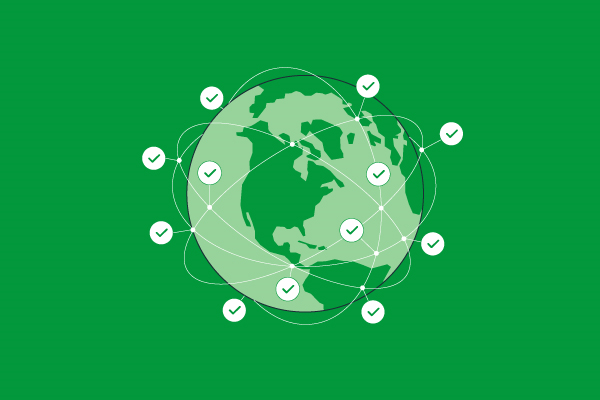The popular web payment gateways network, Oceanpayment, can help you to improve the overall shopping experience of your customers with localized payment methods.
Whether you own an e-commerce platform owner or just looking to maintain your online presence, you want to offer your customers a quick, safe, and easy-to-use web payment gateway. It should fulfill the needs of your business and customers. You need a popular web payment gateway network that supports different payment methods, easy to use, and is compatible with the platform. You can check popular payments gateways and choose one that fits your needs.
What is a Payment Gateway Network?
It is a service that processes and approves payments for e-commerce businesses and online stores. A popular web payment gateway network works as a portal to facilitate the flow of transactions between merchants and customers. It makes use of security protocols and encryption for passing the transaction data safely.
Popular payment gateways are helpful to execute the following transaction types:
Authorization through Network Payment Gateway
It is a type of transaction that is used for checking if a customer has enough funds to pay. It doesn’t need the actual money transfer. While authorization, a merchant needs to ensure that a cardholder is able to pay the order amount. It is used for the order that takes time for shipping or manufacturing. Popular network payment gateways are helpful to make authorization of payments easier.
Capture through Network Payment Gateway
The actual processing of a previously authorized payment results in funds being deposited in the merchant’s account.
Sale through Network Payment Gateway
Sale is known as the combination of authorization and capture transactions. First, a cardholder gets authorized, and then funds may or may not be captured. It is a regular payment to make immediate purchases such as e-tickets and subscription purchases and is used by all popular payment gateways.
Refund through Network Payment Gateway
It occurs as a result of a canceled transaction for which a merchant needs to apply for a refund payment to return the money. Popular payment gatways offer smooth refund process for the users.
Void through Network Payment Gateway
It is similar to a refund, but it can be done if funds are unable to get captured.
Payment Processing Flow of Network Payment Gateway
The infrastructure of a web payment gateway network is a little bit more complex than you think. With several popular payment gateways, the customers need to deal with a small window or a different website to make payment and checkout. However, the processing involves different tools, popular payment gateways, and financial institutions to verify the transaction data on both sides. It helps customers to complete their purchases in a few seconds.
At the checkout, a customer needs to provide the card details, including expiration date and CVV. A web payment gateway needs to perform several tasks, and a popular payment gateway takes about 3 to 4 seconds:
1. Customer
A customer hits the purchase button and fills in the necessary details to pass the transaction data. The data is encrypted, and it needs to be sent to the merchant’s web server through an SSL connection.
2. Merchant and Network Payment Gateway
Once the transaction data is received, a merchant passes the transaction to the web payment gateway through another encrypted SSL channel. The popular payment gateways don’t store the credit card details, but they save tokens.
3. Payment Processor
The information gets passed to the payment processors. These are the companies that offer payment processing services as third-party. The payment processors are connected with the popular web payment gateway and merchant’s account, and it transfers data back and forth. After that, a payment processor passes the transaction to the card network.
4. Card Network Payment Gateway
Mastercard, Visa, American Express, and Discover are some popular card networks. The card network plays a role in verifying the transaction data and passing it to the bank that issued the card.
5. Issuer Bank
The issuer bank can accept or deny the authorization request. A bank sends a code to the payment processor, which includes the transaction status.
6. Network Payment Gateway
The transaction status can be returned to the web payment gateway and then passed to the website. Amazon, WePay, PayPal, 2Checkout, and Stripe are some of the popular payment gateways in the world.
Conclusion
While choosing a between popular network payments gateways, it is always important for businesses to choose a secure and profitable solution that serves their purpose. Oceanpayment offers an ideal solution for online businesses to integrate a web payment gateway for their online payments, and it helps merchants reduce costs and expand revenue.
If you are going to start an online business, in addition to figuring out what you want to sell and who you want to sell to, you also need to plan how to bring your business to market and develop your brand. Online business is a complicated process. Choosing an online payment method requires the correct payment tool. In this article, let’s find out what is a web payment gateway and how to choose a popular payment gateway for your website.
What is Web Payment Gateway?
Merchants who want to have a perfect online operation strategy need a payment processing solution. The function of a merchant service provider depends on the type of service chosen by merchants. For example, some companies only provide web payment gateways, while others provide assistance to merchants in terms of PCI compliance and prevention of chargebacks, so that merchants can operate shops online more easily. All businesses need to obtain a merchant account or payment service provider account to make online payments.
Web payment gateways are one of the most common services. These gateways connect service provider’s processing network with merchants’ website so that merchants can make payments over the internet. Payment processing is a link that every merchant pays great attention to. The advantage of card payment through a payment service provider is that there is usually no need to pay extra for security. Merchants can use features such as PCI compliance in the account. Many unique gateways are also provide to make online sales easier for merchants.
Business characteristics of popular payment gateways
With the rapid increase in digital payment transaction volume, the need to adapt to new payment technologies, and the demand for seamless payment experience from customers, the competition faced by acquirers is more complicated than ever. In the fast-developing payment environment, convenient, safe, and popular payment gateways can ensure that merchants’ continuous business transactions are not blocked, so as to enhance customer consumption experience.
According to different payment scenarios, the acquiring business is divided into offline acquiring business and online acquiring business. Online business mainly involves customers placing an order on the PC-side e-commerce website and submitting the order. Through the PC-side payment process, the customer selects the payment method, such as quick payment or online banking payment, to complete the payment process.
Although most online payments are usually credit card transactions, popular payment gateways can combine different payment methods (such as e-wallets or the recent emergence of encrypted payments, etc.) into a unified interface, so that no matter which payment the customer chooses, the payment gateway can provide it with a perfect payment experience.
Normally, the payment gateway directly contacts the merchant’s acquiring bank. For credit card transactions, the acquiring bank is the final link in the authentication process and is the entity that holds customer funds before payment.
Since payment gateways need to process very sensitive information, such as cardholder data, it is essential to ensure information security. There are already some standards and entities to regulate and evaluate the security level of a software solution such as a payment gateway, such as Strong Customer Authentication (SCA) under the revised Payment Service Directive (PSD2).


How to choose web payment gateway services for your business?
1. Security
Whether the payment company has the strength, whether the payment company can resist hacker attacks, and whether it can increase the transaction rate and payment success rate, both for the user and the website itself, are the first considerations.
2. Expenses
To connect these payment tools and web payment gateways to the website, merchants need to pay various fees, such as transaction fees, cross-border transaction fees, docking fees, monthly fees, chargeback processing fees, and so on.
3. Supported payment methods
50% of regular online shoppers say that if they can’t use their preferred payment method, they will abandon the purchase. Merchants use website analysis to observe the payment products that shoppers in various countries are accustomed to using. In this regard, Oceanpayment can provide merchants with global localized payment solutions.
Conclusion:
All in all, the single payment business will no longer be competitive, and the acquiring business must be realized on the basis of improving various value-added services upstream and downstream of the acquiring business. In addition to providing merchants with a secure and professional web payment gateway channel, Oceanpayment also combines the overall ecological flow opening and data capabilities to provide merchants with services such as “smart operation” and “digital marketing” to help merchants meet various daily business needs, reduce the cost and expand revenue for merchants.
Providing globalized, online and offline integrated payment solutions is also a very important measure for merchants to attract consumers. Oceanpayment is willing to help more companies respond to market changes and bring new breakthroughs in performance.






Comments are closed.